Your cart is currently empty!
The Best 10 Sustainable Farming Practices in Aquaculture
Sustainable farming practices are essential for preserving our environment, ensuring food security, and supporting local communities. In aquaculture, these practices are particularly vital due to the growing global demand for seafood and the ecological challenges associated with fish farming.
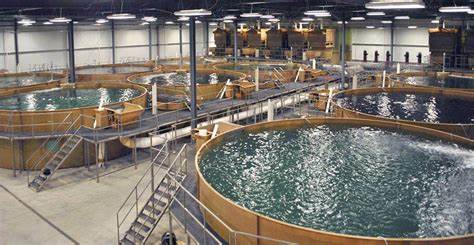
This comprehensive guide explores the top 10 sustainable farming practices in aquaculture, highlighting how these methods contribute to a healthier planet and a more sustainable food system.
Sustainable farming practices
1. Integrated Multi-Trophic Aquaculture (IMTA)
Integrated Multi-Trophic Aquaculture (IMTA) is a system where multiple species from different trophic levels are farmed together. This method mimics natural ecosystems by combining species that utilize different resources and waste products, creating a balanced and sustainable environment.
Benefits of IMTA
- Waste Reduction: IMTA reduces waste by allowing one species’ waste products to be used as nutrients for another. For example, fish waste can be utilized by shellfish and seaweed.
- Increased Biodiversity: Farming multiple species together increases biodiversity, which can enhance ecosystem resilience and stability.
- Enhanced Productivity: By optimizing resource use and reducing waste, IMTA can increase overall productivity and profitability for farmers.
2. Recirculating Aquaculture Systems (RAS)
Recirculating Aquaculture Systems (RAS) are land-based systems that reuse water within the facility. Water is filtered and treated to remove waste and maintain optimal conditions for fish, allowing for high-density production with minimal environmental impact.
Benefits of RAS
- Water Conservation: RAS uses significantly less water compared to traditional aquaculture systems, making it ideal for regions with limited water resources.
- Waste Management: By treating and reusing water, RAS effectively manages waste, reducing the risk of pollution and disease.
- Controlled Environment: RAS allows for precise control over water quality, temperature, and other conditions, leading to improved fish health and growth rates.
3. Organic Aquaculture for Sustainable Farming Practices
Organic aquaculture involves farming fish and other aquatic species without the use of synthetic chemicals, antibiotics, or genetically modified organisms (GMOs). Organic practices emphasize natural inputs and sustainable management techniques.
Benefits of Organic Aquaculture
- Healthier Produce: Organic aquaculture produces healthier seafood, free from synthetic chemicals and antibiotics.
- Environmental Protection: By avoiding synthetic inputs, organic aquaculture reduces the risk of environmental contamination and supports ecosystem health.
- Market Demand: There is growing consumer demand for organic seafood, providing farmers with access to premium markets and higher prices.
4. Sustainable Feed Practices
Feed is a critical component of aquaculture, and its production can have significant environmental impacts. Sustainable feed practices focus on using environmentally friendly ingredients and reducing the reliance on wild-caught fish for feed.
Benefits of Sustainable Feed
- Reduced Environmental Impact: Sustainable feed ingredients, such as plant-based proteins and insect meal, reduce the environmental footprint of aquaculture.
- Resource Efficiency: Utilizing alternative feed sources can reduce the pressure on wild fish stocks and promote resource efficiency.
- Improved Fish Health: Sustainable feed practices can enhance fish health and growth by providing balanced nutrition and reducing the risk of contamination.
5. Polyculture Systems for Sustainable Farming Practices
Polyculture involves farming multiple species together in the same system, often combining species with complementary ecological roles. This approach can enhance productivity and sustainability by optimizing resource use and reducing waste.
Benefits of Polyculture
- Resource Optimization: Polyculture systems make efficient use of available resources, such as space, nutrients, and water.
- Increased Productivity: By farming multiple species together, polyculture can increase overall productivity and profitability.
- Enhanced Ecosystem Health: Polyculture promotes biodiversity and can improve the resilience and stability of aquatic ecosystems.
Case Study: Polyculture in Southeast Asia
In Vietnam, farmers practice rice-fish polyculture, where fish are raised in flooded rice paddies. This system provides mutual benefits, with fish waste fertilizing the rice and the rice providing habitat and food for the fish, leading to increased yields and reduced input costs.
6. Use of Renewable Energy
Energy use in aquaculture can be substantial, particularly for operations that require heating, cooling, and water circulation. Utilizing renewable energy sources, such as solar, wind, and hydroelectric power, can significantly reduce the carbon footprint of aquaculture operations.
Benefits of Renewable Energy
- Reduced Carbon Emissions: Renewable energy sources produce little to no greenhouse gas emissions, helping to combat climate change.
- Cost Savings: Renewable energy can reduce operational costs by lowering energy bills and providing long-term energy security.
- Sustainable Operations: Utilizing renewable energy supports the overall sustainability of aquaculture operations and promotes environmental stewardship.
7. Selective Breeding and Genetic Improvement
Selective breeding involves choosing the best-performing species to reproduce, thereby enhancing desirable traits in future generations. In aquaculture, this practice can improve growth rates, disease resistance, and feed efficiency.
Benefits of Selective Breeding
- Improved Productivity: Selective breeding can increase growth rates and overall productivity, leading to higher yields.
- Disease Resistance: By selecting for disease-resistant traits, farmers can reduce the need for antibiotics and other treatments.
- Feed Efficiency: Genetic improvement can enhance feed conversion rates, reducing the amount of feed needed to produce a given amount of fish.
Case Study: Improved Tilapia Strains
In Ghana, researchers have developed improved strains of tilapia through selective breeding, resulting in fish with faster growth rates and greater resistance to common diseases. These advances have boosted the productivity and sustainability of tilapia farming in the region.
8. Water Quality Management
Maintaining high water quality is essential for the health and growth of farmed fish. Effective water quality management involves monitoring and controlling parameters such as oxygen levels, pH, and nutrient concentrations.
Benefits of Water Quality Management
- Healthy Fish: Good water quality promotes fish health, reducing the risk of disease and mortality.
- Optimal Growth: Maintaining optimal water conditions supports faster growth rates and higher yields.
- Environmental Protection: Effective water quality management reduces the risk of environmental contamination and protects surrounding ecosystems.
9. Sustainable Hatchery Practices
Sustainable hatchery practices involve producing high-quality seed (young fish or larvae) using environmentally friendly methods. These practices include broodstock management, disease control, and efficient use of resources.
Benefits of Sustainable Hatchery Practices
- High-Quality Seed: Sustainable hatcheries produce robust and healthy seed, ensuring better survival and growth rates.
- Reduced Environmental Impact: Environmentally friendly hatchery practices minimize the impact on natural ecosystems and reduce the risk of disease outbreaks.
- Resource Efficiency: Efficient hatchery practices optimize the use of water, feed, and other resources, enhancing overall sustainability.
Case Study: Sustainable Salmon Hatcheries
In Scotland, sustainable salmon hatcheries use recirculating systems and natural breeding techniques to produce high-quality smolts (young salmon). These practices have improved the health and survival of the fish, supporting the sustainability of the salmon farming industry.
10. Community-Based Management for Sustainable Farming Practices
Community-based management involves local communities in the planning, implementation, and monitoring of aquaculture projects. This approach ensures that the benefits of aquaculture are shared equitably and that local knowledge and priorities are integrated into management practices.
Benefits of Community-Based Management
- Local Empowerment: Involving communities in aquaculture management empowers local people and ensures that their needs and perspectives are considered.
- Sustainable Practices: Community-based management promotes sustainable practices that are tailored to local conditions and knowledge.
- Social Equity: By sharing the benefits of aquaculture equitably, community-based management supports social equity and enhances community well-being.
Conclusion – Sustainable Farming Practices
Sustainable farming practices in aquaculture are essential for ensuring the long-term viability of fish farming, protecting the environment, and supporting local communities. From integrated multi-trophic aquaculture and recirculating systems to organic practices and renewable energy, these methods offer numerous benefits for both producers and the planet.
By adopting these sustainable practices, aquaculture operations can contribute to a healthier and more sustainable food system, meeting the growing global demand for seafood while safeguarding our natural resources.

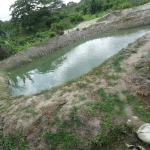

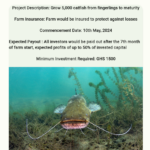
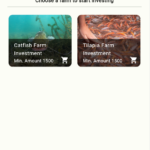
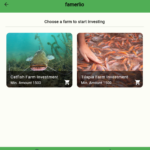
Leave a Reply